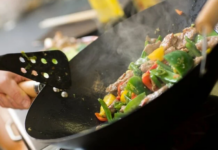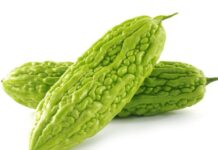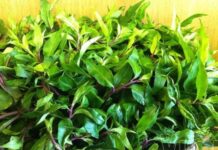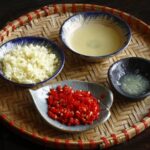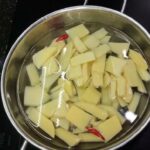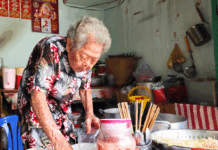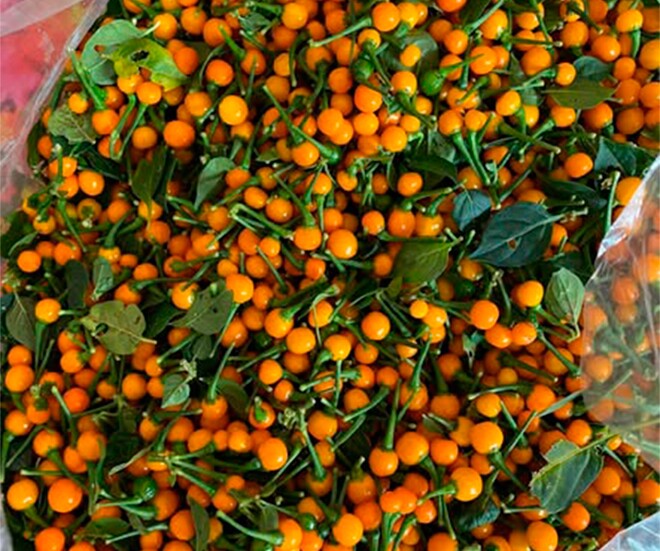
This unique chili variety has been gaining popularity in the market over the past five years.
Vendors describe Aji Charapita chilies as small, round fruits, about the size of a pea, with a vibrant orange-yellow color. They pack a heat level several times higher than regular chilies. These chilies emit a sweet, fruity fragrance and boast nutritional value seven times higher than oranges.
“Due to their tiny size, customers usually buy them by the ounce. Despite their small size, these chilies are incredibly spicy, crunchy, juicy, and aromatic. However, the heat dissipates quickly, unlike local chilies. The flavor is unforgettable—once you try it, you’ll remember it forever. The seeds can easily grow into seedlings; just ensure regular watering and fertilization for healthy growth and fruiting,” shared Ms. Ha from Lam Dong.

The chilies are small, with a fresh orange-yellow hue.
Aji Charapita is renowned as one of the world’s most expensive and rare spices. This tiny chili originates from Peru, where it grows wild in the dense Amazon rainforests. Despite its small size, Aji Charapita’s flavor and value make it a sought-after ingredient in gourmet cuisine.
At one point, it was sold for up to $25,000–35,000 per kilogram, equivalent to approximately $600–824 million VND per kilogram, making it the world’s most expensive chili, rivaling saffron in luxury.
Aji Charapita is a bushy plant, growing 40–55 cm tall with a spread of 35–45 cm. It thrives in temperatures between 16–45°C and can be harvested after about 90 days. Each plant produces hundreds of small, round fruits, typically yellow or red, with yellow being the most characteristic. On average, 1 kg of chilies contains about 3,000 fruits, highlighting their tiny size.


After three months of cultivation, the plant begins to bear fruit.
Inside each fruit is a cluster of small seeds, with a crisp and firm outer layer. When eaten raw, Aji Charapita offers a fresh, slightly sweet flavor with a subtle fruity aroma. Chefs often use it to enhance salads, sauces, or high-end seafood dishes. Additionally, the chilies are dried and ground into a rare spice powder, highly prized by five-star restaurants and the global elite.
Its heat level is 4–20 times higher than Jalapeño chilies, famous in Mexico. The intense heat spreads quickly but isn’t overpowering, leaving a sweet, aromatic aftertaste that is both addictive and memorable.
For optimal growth, flowering, and fruiting, with nutritional quality comparable to Peruvian-grown chilies, it’s recommended to use certified seedlings rather than seeds from the fruit.

Many people grow Aji Charapita as an ornamental plant in their gardens or balconies.
Some enthusiasts crossbreed Aji Charapita with other chili varieties. Many also cultivate it as an ornamental plant in their gardens or balconies, enjoying its vibrant fruits after about 90 days.
3 Long-Lasting Spices in Your Kitchen That Boost Health: Number 1 Tends to Run Out Fast
Eating healthy isn’t just about choosing clean foods, it’s also about knowing when to hold back on the things that silently harm your health and that of your family. So, here are three types of seasonings that, the longer you use them, the more your body will thank you and your blood vessels will silently rejoice:
The Ultimate Guide to Blending a Mouth-watering Chili Garlic Sauce: Elevate Your Dipping Experience
If you’ve ever experienced the sinking feeling of garlic and chili sinking to the bottom, or ended up with a cloudy, overly spicy fish sauce, then the following tips will be a lifesaver. Learn these simple yet effective tricks to master the art of mixing fish sauce like a pro and elevate your culinary creations.
The Perfect Chili Garlic Sauce: A Balanced Blend for the Ultimate Dip
Sweet and sour fish sauce is a staple in Vietnamese cuisine, and while anyone can mix a batch, getting the perfect balance of flavors and a visually appealing dish with floating chili and garlic is an art. It’s a simple condiment, but the devil’s in the detail – with the right touch, you can keep the chili and garlic from sinking and discoloring, ensuring a vibrant and tasty sauce every time.







